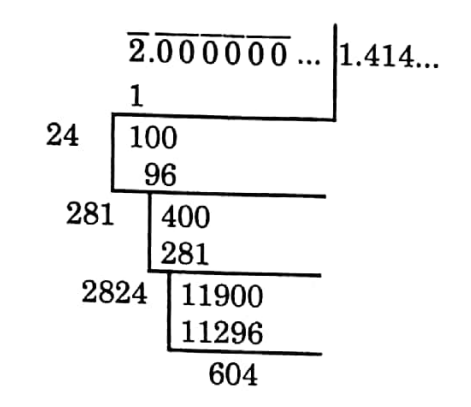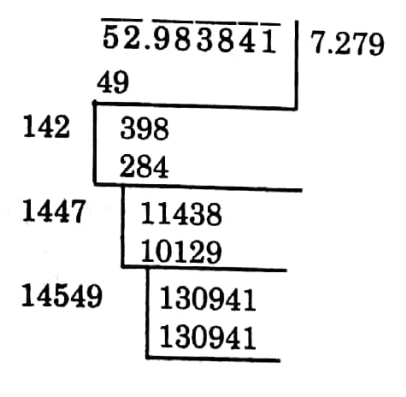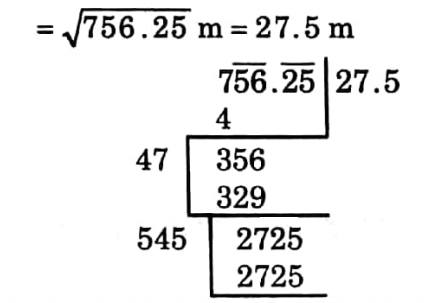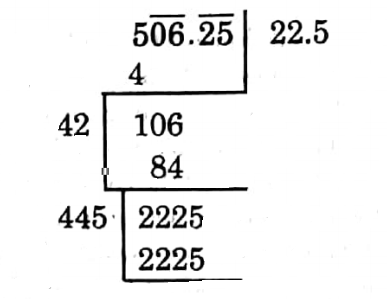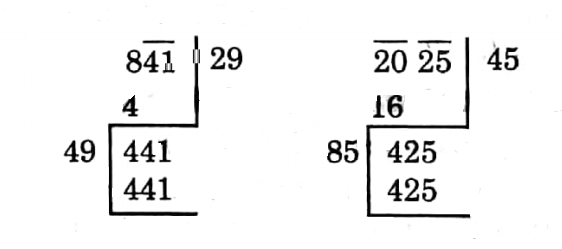Chapter 4 Mixture
Mixture Introduction
Different types of problems in arithmetic can be solved by the application of the ratio and proportion methods. The mixture is one of them. The concept of ratio and proportion is directly applied to the problems with the mixture. So we may consider the present chapter as an exercise of our previous knowledge. In fact, in this chapter, our aim is to investigate several types of problems on a mixture and to obtain their solutions by the application of ratio and proportion.
4.2 Mixture
First of all, let us try to find what a mixture means.
In our practical life sometimes we need to mix two or more articles of different values and in different quantities to produce an article of a different value and quality. This is known as a mixture.
Thus a mixture is defined as a combination of two or more articles or ingredients. Diagrammatically, a mixture can be represented as:
Ingredient #1 + Ingredient # 2
+………..= Mixture
While analyzing mixture problems, the following cases may arise :
1. In some cases we are to determine the value of a mixture when the quantity and value of each ingredient are known.
2. Sometimes we are to find the ratio in which two or more ingredients are to be mixed to obtain a mixture of a given value.
3. Also there are some cases where we are to increase or decrease the quantities of the ingredients of a mixture and to find the new ratio of the ingredients of the mixture.
4.3 Different types of mixture
In your physical science book, you will study, in detail, the different types of mixtures. Here we shall mainly confine our attention to the following two types of mixture.
1. Mixture of solid in solid.
2. Mixture of liquid in liquid.
Read And Learn More WBBSE Solutions For Class 8 Maths
Chapter 4 Mixture Some problems with a mixture
Example 1
In a mixed fertilizer the ratio of urea to potash is 3: 7. If 8 kg of urea is further added to 40 kg of this type of fertilizer, then find the new ratio of urea to potash.
Solution:
Given:
In a mixed fertilizer, the ratio of urea to potash is 3: 7
If 8 kg of urea is further added to 40 kg of this type of fertilizer
Let, in 40 kg of the fertilizer the quantity of urea be 3x kg and that of potash be 7x kg.
∴ 3x+7x=40
or, 10x = 40
or, x = 40/10 = 4
∴ quantity of urea in the mixed fertilizer
3 x 4 kg = 12 kg and quantity of potash
=7×4 kg 28 kg.
If 8 kg of urea is added to this mixture; then the new mixture will contain, (12 +8) kg or 20 kg of urea and 28 kg of potash. Hence, in the new mixture, the ratio of urea to potash = 20: 28 = 5:7.
The new ratio of urea to potash is 5:7.
Example 2
The ratio of water and Dettol in 36 liters of Dettol-water is 5: 1. What volume of Dettol should be added to the mixture so that the ratio of water and Dettol becomes 3:1?
Solution:
Given:
The ratio of water and Dettol in 36 liters of Dettol water is 5: 1.
In 36 liters of Dettol water,
volume of water = 36 x 5/6 litres = 30 litres
volume of Dettol = 36 × 1/6 litres = 6 litres
Let, if x liters of Dettol be mixed with the solution;
then the ratio of water and Dettol will be 3: 1.
∴ 30 / 6+x
= 3/1
or, 3x+18= 30
or, 3x= 30-18
or, 3x= 12
or, x = 12/3
= 4
4 volume of Dettol should be added to the mixture so that the ratio of water and Dettol becomes 3:1
Example 3
49 kg of blended tea contains Assam and Darjeeling tea in a ratio of 5: 2. What quantity of Darjeeling tea is to be added to the mixture to make the ratio of Assam to Darjeeling tea 2:1?
Solution:
Given:
49 kg of blended tea contains Assam and Darjeeling tea in a ratio of 5: 2.
Let, in the 49 kg of blended tea, the quantity of Assam tea be 5x kg and that of Darjeeling tea be 2x kg.
∴ 5x+2x=49
or, 7x=49
or, x = 49/7 = 7
∴ Quantity of Assam tea = 5 x 7 kg = 35 kg
Quantity of Darjeeling tea = 2 × 7 kg = 14 kg
Let y kg of Darjeeling tea is to be added to the mixture so that the ratio of Assam tea. to Darjeeling tea becomes 2: 1.
∴ 35/14+y
= 2/1
Or. 2y + 28 = 35
2y= 35-28 = 7
or, y = 7/2
= 3.5
The required quality of Darjeeling tea is 3.5 kg.
Example 4
In a certain type of brass the ratio of copper and zinc is 5:2. What will be the ratio of copper and zinc in 28 kg of such brass if 4 kg of copper is added to it?
Solution:
Given:
In a certain type of brass the ratio of copper and zinc is 5:2.
In 28 kg of brass
weight of copper = 28/7 × 5 kg
= 20 kg
weight of zinc = 28/7 x 2 kg
= 8 kg
If 4 kg of copper is mixed with this brass the ratio of copper and zinc becomes
= 20+4/8
= 24/8
= 3:1
The new ratio of copper and zinc is 3:1.
Example 5
Two containers contain 16 liters and 20 liters of mixtures of milk and water. The ratios of water and milk in the two containers are 3: 1 and 4: 1 respectively. If the entire mixture of both containers is poured into a third container, what will be the new ratio of milk and water in that container?
Solution:
Given:
Two containers contain 16 liters and 20 liters of mixtures of milk and water.
The ratios of water and milk in the two containers are 3: 1 and 4: 1 respectively.
In the first container, the ratio of water and milk is 3:1 and the total quantity of mixture= is 16 liters.
∴ Quantity of water = 3/4 x 16 liters = 12 liters[ 3 parts out of 4 are water]
Quantity of milk = 1/4 x 16 litres = 4 liters
In the second container, the ratio of water and milk is 4: 1 and the total quantity of the mixture = 20 liters.
∴ Quality of water = 4/5 x 20 liters = 16 liters
Quantity of milk = 1/5 x 20 liters = 4 liters
Hence, the ratio of milk and water in the third container
= 4+4 / 12+16
= 8/28
= 2/7
= 2:7
The new ratio of milk and water is 2:7
Example 6
In a phenyl water solution of 60 liters the ratio of phenyl and water is 2:23. How much phenyl should be added to this solution so that the ratio of phenyl and water becomes 9:46?
Solution:
Given:
In a phenyl water solution of 60 liters the ratio of phenyl and water is 2:23.
In 60 liters of phenyl water solution,
volume of phenyle= 60/25 x 2 litres
= 24/5 liters
volume of water = 60/25 x 23 liters
= 276/5 liters
Let, if x liters of phenyle be mixed with the solution then the ratio of phenyle and
water will be 9:46.
∴ 24/5 + x / 276/5 = 9/46
or, 24+5x / 276 = 9/46
or, 230x + 1104
= 2484
or, 230x = 2484 – 1104
= 1380
or, x = 1380/230
= 6
The required quality of phenyle is 6 liters
Example 7
In an alloy of brass the ratio of copper to zinc is 7: 4. If 6 kg of zinc be added to 33 kg of such a quality of brass, then find the new ratio of copper to zinc.
Solution:
Given:
In an alloy of brass the ratio of copper to zinc is 7: 4.
In that alloy
weight of copper = (33 x 7/11)kg
= 21 kg
weight of zinc = (33 x 44/11)kg
= 12 kg
If 6 kg of zinc is added then the weight of zinc becomes (12+6)kg
= 18kg
:. New ratio of copper to zinc = 21/18
= 7/6
= 7:6.
The new ratio of copper to zinc is 7: 6.
Example 8
A mason has prepared a masonry mixture with sand and cement in a ratio of 7:1. But after the brick work done, it is seen that 72 kg of the mixture remains. He added more cement to this mixture and the ratio of sand and cement became 6: 1. What quantity of cement was mixed?
Solution :
Given:
A mason has prepared a masonry mixture with sand and cement in a ratio of 7:1.
But after the brick work done, it is seen that 72 kg of the mixture remains.
He added more cement to this mixture and the ratio of sand and cement became 6: 1.
In 72 kg of the mixture,
weight of sand = 72/8 x 7kg
= 63kg
weight of cement= 72/8 x 1 kg
= 9 kg
Let, if x kg of cement is mixed then the ratio of sand and cement will be 6:1.
∴ 63 / 9+x
= 6/1
or, 6x + 54
= 63
or, 6x = 63-54
= 9
or, x = 9/6
= 3/2
= 1.5
1.5 kg of comment was mixed.
Example 9
The ratio of the volumes of water and glycerine in 240 cc. of glycerine mixed with water is 1: 3. What additional volume of water and glycerine become 2: 3?
Solution:
Given:
The ratio of the volumes of water and glycerine in 240 cc. of glycerine mixed with water is 1: 3.
In that mixture
volume of water = (240 x 1/4)cc.
= 60cc.
volume of glycerine = (240 x 3/4)cc.
= 180cc.
Let, x cc. of water is to be added so that the ratio of water and glycerine becomes 2 : 3.
∴ 60+x / 180
= 2/3
or, 3x + 180 = 360
or, 3x = 360 – 180
or, 3x = 180
or, x = 180/3
= 60
The required quantity of water is 60cc.
Example 10
The ratio of copper, zinc, and nickel in a type of German silver is 4:3:2. How many 54 kg of zinc should be added to 54 kg of this type of German silver so that their ratio becomes 6:5:3?
Solution :
Given:
The ratio of copper, zinc, and nickel in a type of German silver is 4:3:2.
In 54 kg of German silver,
weight of copper = 54/9 x 4kg
= 24 kg
weight of zinc = 24/9 x 3 kg
= 18 kg
Let, x kg of zinc is to be added.
∴ 24/18+x = 6/5
or, 6x +108 = 120
or, 6x=120 – 108
= 12
or, x= 12/6
= 2
The required quantity of zinc is 2 kg.
Example 11
In a glass of beverage, syrup, and water are in the ratio 3: 1. What fraction of the quantity of beverage should be replaced by water to make the ratio 1: 1?
Solution :
Given
In a glass of beverage, syrup, and water are in the ratio 3: 1.
In that beverage
the syrup is 3/4 part and the water is 1/4 part.
In order to make the ratio 1: 1 syrup will be 1/2 part and water will be 1/2 part
.. syrup to be withdrawn = (3/4 – 1/2) part
= 1/4 part
Now,
3 parts of syrup are in 4 parts of the beverage
1 part of syrup is in 4/3 parts of the beverage
1/4 part of syrup is in 4/3 x 1/4 parts of the beverage
= 1/3 parts of the beverage
1/3 part of the beverage should be replaced.
Example 12
In two different kinds of washing powder the ratios of soda and soap powder are 2 : 3 and 4: 5. Find the part of soap powder in the new washing powder which is prepared by mixing 10 kg of first washing powder with 18 kg of second washing powder.
Solution:
Given:
In two different kinds of washing powder the ratios of soda and soap powder are 2 : 3 and 4: 5.
In 10 kg of first washing powder,
weight of soda = 10 /5 x 2 kg = 4 kg
weight of soap powder = 10/5 x 3 kg
= 6kg
In 18 kg of second washing powder,
weight of soda = 18/9 x 4 kg
= 8 kg
weight of soap powder = 18/9 x 5 kg
= 10 kg
∴ Total weight of washing powder
= (10 + 18) kg = 28 kg
Total weight of soap powder
= (6 + 10) kg = 16 kg
∴ In the new washing powder, the part of soap powder =16/28
= 4/7
There is 4/7 part of soap powder in the new washing powder.
Example 13
Syrup and water are in the ratio 3: 2 and 45 respectively in the two vessels. What the volume of the second mixture is to be mixed with 3 liters of first mixture so that the volume of syrup and water in the new mixture becomes equal?
Solution:
Given:
Syrup and water are in the ratio 3: 2 and 45 respectively in the two vessels.
Let, x liters of the second mixture is to be
mixed with 3 liters of the first mixture.
In the 3 liters of the first mixture
the volume of syrup = 3 x 3/5 liters
= 9/5 liters
the volume of water = 3 x 2/5 liters
= 6/5 liters
In the x liters of the second mixture
volume of syrup = x x 4/9 liters
= 4x/9 liters
volume of water = x x 5/9 liters
=5x/9 liters
∴ According to the problem,
4x/9 + 9/5 = 5x/9 + 6/5
or, 5x/9 – 4x/9 = 9/5 – 6/5
or, x/9 = 3/5
or, x = 27/5
= 5 2/5
The required volume of 2nd mixture is 5 2/5
Example 14
3 similar glasses of equal size are filled with beverages. The ratios of water and syrup in these three glasses are 3:1, 5:3, and 9:7 respectively. The beverage of three glasses is poured into a big vessel. What is the ratio of water and syrup in the new vessel?
Solution:
Given:
3 similar glasses of equal size are filled with beverages.
The ratios of water and syrup in these three glasses are 3:1, 5:3, and 9:7 respectively.
The beverage of three glasses is poured into a big vessel.
In the first glass, water is 3/4 part and syrup is 1/4 part
In the second glass, water is 5/8 part and syrup is 3/8 part
In the third glass, water is 9/16 part and syrup is 7/16 part
∴ Total water
= (3/4 +5/8 +9/16) part
= 12+10+9 / 16 part
= 31/16 part.
Total syrup
= (1/4 + 3/8 + 7/16) part
= 4+6+7 / 16 part
= 17/16 part
∴ water: syrup = 31/16:17/16
= 31:17
The ratio of water and syrup in the new vessel is 31:17.
Example 15
In a mixture, the ratio of the first and second liquid is 2: 3 and that in another mixture is 5: 4. Find the ratio in which these two mixtures should be mixed so that in the new mixture the two liquids be in equal volume.
Solution:
Given:
In a mixture, the ratio of the first and second liquid is 2: 3 and that in another mixture is 5: 4.
Let, x liters of the first mixture be mixed
with y liters of the second mixture so that
in the new mixture, the two liquids be in equal volume.
In x liters of the first mixture
the volume of the first liquid = x x 2/5 liter
= 2x/5 liter
In y liters of the second mixture
the volume of the first liquid = y x 4/9 liter
= 4y/9 liter
According to the question,
2x/5 + 5y/9 = 3x/5 + 4y/9
or, 5y/9 – 4y/9
= 3x/5 – 2x/5
or, y/9=x/5
or, x/y = 5/9
or, x:y = 5:9
The required ratio is 5:9.
Example 16
In a vessel of beverage, the ratio of syrup and water is 5:2. What part of the beverage should be removed and replaced by water so that the volume of syrup and water becomes equal?
Solution :
Given:
In a vessel of beverage, the ratio of syrup and water is 5:2.
In that beverage, the syrup is 5/7 part and the water is 2/7 part.
In order to make the quality of syrup and water equal, the syrup will be 1/2 part and the water will be 1/2 part.
.. Syrup to be withdrawn = (5/7 – 1/2) part
= 10-7 / 14 part
= 3/14 part
Now, 5 parts of syrup are in 7 parts of the beverage
1 part of syrup is in 7/5 parts of the beverage
3/14 parts of syrup is in 7/5 x 3/14 parts of beverage = 3/10 parts of beverage
3/10 part of the beverage should be removed.
Example 17
The ratio of water and syrup in three glasses of equal volume is 5: 1, 5:3, and 5: 7 respectively. If the three mixtures be poured in a big vessel find the ratio of syrup and water in that vessel.
Solution :
Given:
The ratio of water and syrup in three glasses of equal volume is 5: 1, 5:3, and 5: 7 respectively.
Let, the volume of each glass of equal
volume be x c.c.
In the first glass, the volume of water is 5x/6c.c.
and that of syrup is x/6c.c.
In the second glass, the volume of water is 5x/8 c.c and that of syrup is 7x/12 c.c.
Hence, in the big vessel, the ratio of syrup and water
= \(\frac{\frac{x}{6}+\frac{3 x}{8}+\frac{7 x}{12}}{\frac{5 x}{6}+\frac{5 x}{8}+\frac{5 x}{12}}=\frac{\frac{4 x+9 x+14 x}{24}}{\frac{20 x+15 x+10 x}{24}}\)
= \(\frac{27 x}{24} \times \frac{24}{45 x}=\frac{27}{45}=\frac{3}{5}=3: 5\)
The ratio of syrup and water is 3:5.
Example 18
There are three kinds of liquid in a beverage of 700 liters. The ratio of the first and second liquids is 2: 3 and the ratio of the second and the third liquid is 4: 5. What quantity of the first and the second liquid be mixed with the third beverage so that the ratio of the three liquids will be 6:5:3?
Solution:
Given:
There are three kinds of liquid in a beverage of 700 liters.
The ratio of the first and second liquids is 2: 3 and the ratio of the second and the third liquid is 4: 5.
In 700 liters of beverage,
the first liquid second liquid
= 2:3= (2x 4): (3 x 4) = 8:12
the second liquid third liquid
= 4:5= (4 x 3): (5 x 3) = 12:15
∴ First liquid: Second liquid: Third liquid
= 8:12:15
∴ The volume of the first liquid = 700/35 x 8 liters
= 160 liters
Volume of second liquid = 700/35 x 12 liters
= 240 liters
Volume of third liquid = 700/35 x 115 liters
300 liters
Let, x liters of the first liquid is to be mixed.
∴ 160 + x / 300
= 6/3
= 2
or, x + 160 = 600.
or, x = 600 – 160
= 440
Again. let y liters of the second liquid is to be mixed.
∴ 240 + y / 300 = 5/3
or, 3y + 720 = 1500
or, 3y + 720 = 1500
or, 3y = 1500 – 720
= 780
or, y = 780/3
= 260
The first liquid is 440 liters and the second liquid is 260 liters.
Example 19
In two types of mixed tea, the ratios of Darjeeling and Assam tea are 27 and 1:5 respectively. Find the ratio in which these two types of tea should be mixed so that the new ratio of Darjeeling and Assam tea will be 1: 4.
Solution:
Given:
In two types of mixed tea, the ratios of Darjeeling and Assam tea are 27 and 1:5 respectively.
Let, x kg of the first type of tea should be mixed
with y kg of the second type of tea, so that the In the first bottle, phenyle is the ratio of Darjeeling and Assam tea in the
mixed tea will be 1: 4.
Now, in x kg of the first type of tea
weight of Darjeeling tea = x x 2/9 kg
= 2x/9kg
and weight of Assam tea = x x 7/9 kg
= 7x/9 kg
In y kg of second type tea
weight of Darjeeling tea = y x 1/6 kg
= y/6 kg
and weight of Assam tea = y x 5/6 kg
= 5y/6kg
According to the question,
\(\frac{\frac{2 x}{9}+\frac{y}{6}}{\frac{7 x}{9}+\frac{5 y}{6}}=\frac{1}{4} \quad \text { or, } \frac{\frac{4 x+3 y}{18}}{\frac{14 x+15 y}{18}}=\frac{1}{4}\)
or, 4x + 3y / 14x + 15y = 1/4
or, 16x + 12y = 14x + 15y
or, 16x – 14x = 15y – 12y
or, 2x = 3y
or, x:y = 3:2
The required ratio = 3:2.
Example 20
The ratio of the volumes of the three bottles is 5:3:2. These three bottles are filled with a solution of phenyle and water. The ratio of phenyle and water in the three bottles is 2:3, 1:2, and 1:3 respectively.2/3 part of the first bottle, 1/2 part of the second bottle, and 2/3 part of the third bottle are mixed together. Find the ratio of phenyle and water in the new mixture.
Solution:
Given:
The ratio of the volumes of the three bottles is 5:3:2.
These three bottles are filled with a solution of phenyle and water.
The ratio of phenyle and water in the three bottles is 2:3, 1:2, and 1:3 respectively.
2/3 part of the first bottle, 1/2 part of the second bottle, and 2/3 part of the third bottle are mixed together.
In the first bottle, phenyle is 2/5 part and water is 3/5 part.
In the second bottle, phenyle is 1/3 part and water is 2/3 part.
In the third bottle, phenyle is 1/4 part and water is 3/4 part.
Since, the ratio of the volumes of the three bottles is 5:3:2 and 1/3 part of the first bottle, 1/2 part of the second bottle and 2/3 part of the third bottle are mixed together, therefore,
total phenyle
\(=\left(\frac{5}{10} \times \frac{1}{3} \times \frac{2}{5}+\frac{3}{10} \times \frac{1}{2} \times \frac{1}{3}+\frac{2}{10} \times \frac{2}{3} \times \frac{1}{4}\right) \text { part }\) \(=\left(\frac{1}{15}+\frac{1}{20}+\frac{1}{30}\right) \text { part }\) \(=\frac{4+3+2}{60} \text { part }=\frac{9}{60} \text { part }\) \(=\left(\frac{5}{10} \times \frac{1}{3} \times \frac{3}{5}+\frac{3}{10} \times \frac{1}{2} \times \frac{2}{3}+\frac{2}{10} \times \frac{2}{3} \times \frac{3}{4}\right) \text { part }\) \(=\left(\frac{1}{10}+\frac{1}{10}+\frac{1}{10}\right) \text { part }=\frac{3}{10} \text { part }\) \(=\frac{9}{60}: \frac{3}{10}=\frac{9}{60} \times \frac{10}{3}=\frac{1}{2}=1: 2\)The ratio of phenyle and water is 1:2.
Example 21
In two types of brass, the ratios of copper to zinc are 8: 3 and 15: 7 respectively. If the two types of brass be mixed in the ratio 5: 2 a new type of brass is obtained. Find the ratio of copper to zinc in this new type of brass.
Solution:
Given
In two types of brass, the ratios of copper to zinc are 8: 3 and 15: 7 respectively.
If the two types of brass be mixed in the ratio 5: 2 a new type of brass is obtained.
Let, 5x kg of the first type of brass be mixed
with 2x kg of the second type of brass. In 5x kg of the first type of brass
weight of copper = (5x x 8/11)kg
= 40x/11 kg
and weight of zinc = (5x x 3/11)kg
= 15x/11 kg
In 2x kg of the second type of brass
weight of copper = (2x x 15/22)kg
= 15x/11 kg
and weight of zinc = (2x x 7/22) kg
7x/11 kg
In the new type of brass, the ratio of copper to zinc
\(=\frac{\frac{40 x}{11}+\frac{15 x}{11}}{\frac{15 x}{11}+\frac{7 x}{11}}=\frac{\frac{55 x}{11}}{\frac{22 x}{11}}=\frac{55 x}{11} \times \frac{11}{22 x}=5: 2\)The ratio of copper to zinc is 5:2
Example 22
In two types of stainless steel, the ratios of chromium and steel are 2 11 and 5: 21 respectively. In what ratio should the two types of stainless steel be mixed so that the ratio of chromium to steel in the mixed type is 7:32?
Solution:
Given:
In two types of stainless steel, the ratios of chromium and steel are 2: 11 and 5: 21 respectively.
Let, x kg of the first type of stainless steel be mixed with y kg of the second type. In the x kg of the first type of stainless steel-
weight of chromium = x x2/12 kg
= 2x/13kg
weight of steel = x x11/13 kg
= 11x / 13 kg
In the y kg of the second type of stainless steel
weight of chromium = y x 5/26 kg
= 5y/26 kg
weight of steel = y x 21/26 kg
= 21y/26 kg
According to the question
\(\frac{\frac{2 x}{13}+\frac{5 y}{26}}{\frac{11 x}{13}+\frac{21 y}{26}}=\frac{7}{32} \quad \text { or, } \frac{\frac{4 x+5 y}{26}}{\frac{22 x+21 y}{26}}=\frac{7}{32}\)or, \(\frac{4 x+5 y}{22 x+21 y}=\frac{7}{32}\)
or, 128x + 160y = 154x + 147y
or, 154x – 128x = 160y – 147y
or, 26x = 13y
or, \(\frac{x}{y}=\frac{13}{26} \quad \text { or, } x: y=1: 2\)
The ratio is 1:2
Example 23
1/3rd and 1/4th parts of two vessels of equal volume are filled with fruit juice. Water is now added to the vessels to full capacity and they are mixed in a third vessel. What is the ratio of fruit juice to water in the third vessel?
Solution:
Given
1/3rd and 1/4th parts of two vessels of equal volume are filled with fruit juice. Water is now added to the vessels to full capacity and they are mixed in a third vessel.
In the first vessel
1/3rd part is filled with fruit juice and
therefore (1-1/3)
or, 2/3rd part is filled with water.
In the second vessel –
1/4th past is filled with fruit juice and
Therefore (1-1/4)
or, the 3/4th part is filled with water.
In the third vessel the ratio of fruit juice to water
\(=\frac{\frac{1}{3}+\frac{1}{4}}{\frac{2}{3}+\frac{3}{4}}=\frac{\frac{4+3}{12}}{\frac{8+9}{12}}=\frac{7}{12} \times \frac{12}{17}=7: 17\)The ratio of fruit juice to water is 7: 17.
Example 24
Pure milk contains 89% water. If in a sample of milk, there is 90% water; then find the quantity of water mixed in 22 liters of such milk.
Solution:
Given:
Let, x liters of water have been mixed. Now, in this 22 liters of milk mixed with 90
water, the quantity of water =22 x 90/100
litres = 99/5 litres.
Now, there were (22-x) liters of pure milk before water was mixed.
The quantity of water in this pure milk of (22-x) liters is, (22-x) x89/100 liters = (979/50 – 89x/100) liters.
So, 979/50 – 89x/100 + x = 99/5
or, x – 89x/100 = 99/5 – 979/50
or, 11x/100 = 11/50
or, x = 11/50 x 100/11
= 2
The required quantity of water is 2 liters.
Example 25
The ratio of land-region and water-region of the earth is 1: 2. If this ratio be 2: 3 in the Northern Hemisphere find it in the Southern Hemisphere.
Solution:
Given:
The ratio of land-region and water-region of the earth is 1: 2.
If this ratio be 2: 3 in the Northern Hemisphere.
1/3rd of the earth is land-region
and 2/3rd of the earth is water-region
Land-region in the Northern Hemisphere
= 2/5th of the Northern Hemisphere
= (1/2 x 2/5) th of the earth = 1/5th of the earth water-region in the Northern Hemisphere
= 3/5th of the Northern Hemisphere
= (1/2 x 3/5)th of the earth = 3/10th of the earth Land-region in the Southern Hemisphere
=(1/3-1/5)th of the earth = 2/15th of the earth
= 4/15th of the Southern Hemisphere water region in the Southern Hemisphere
=(2/3 – 3/10)th of the earth = 11/30th of the earth = 11/15th of the Southern Hemisphere.
∴ In the Southern Hemisphere the ratio of land-region and water-region
= 4/15:11/15 = 4:11
The ratio is 4:11.

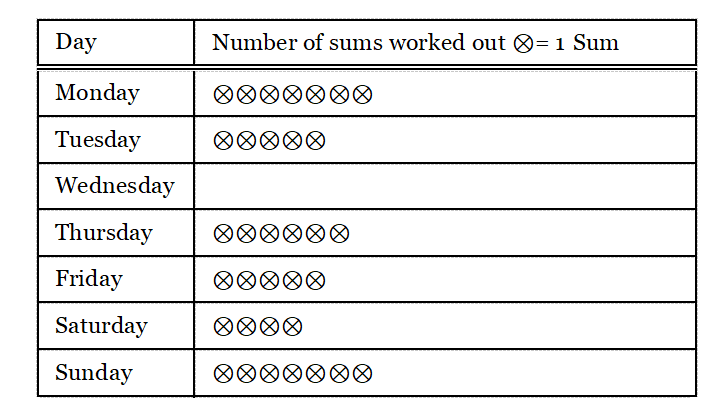
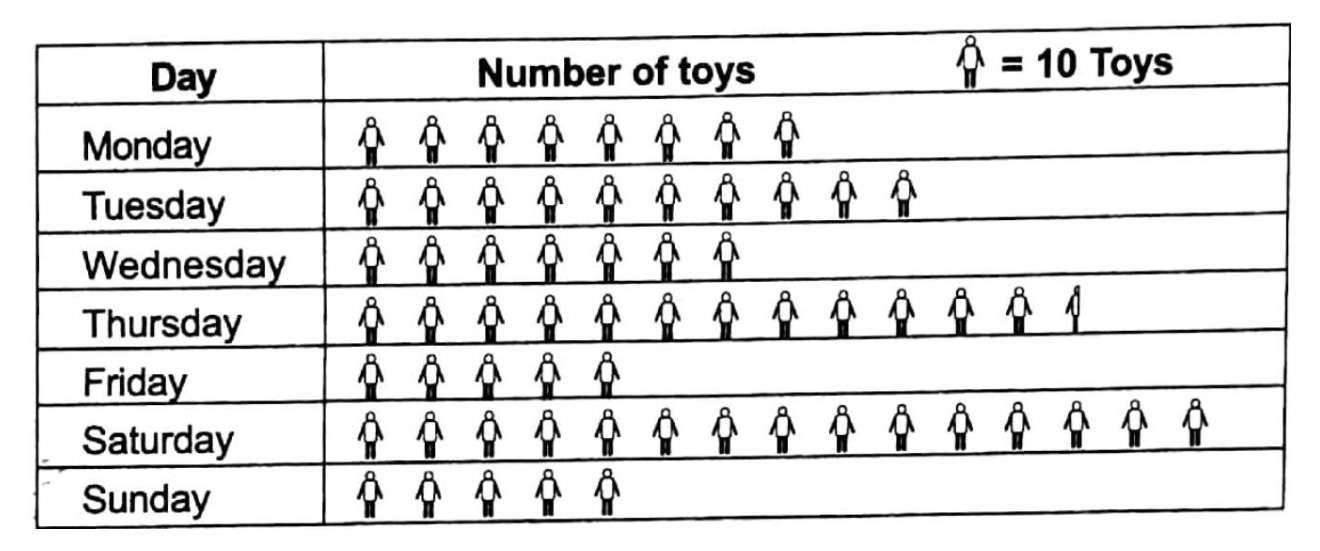


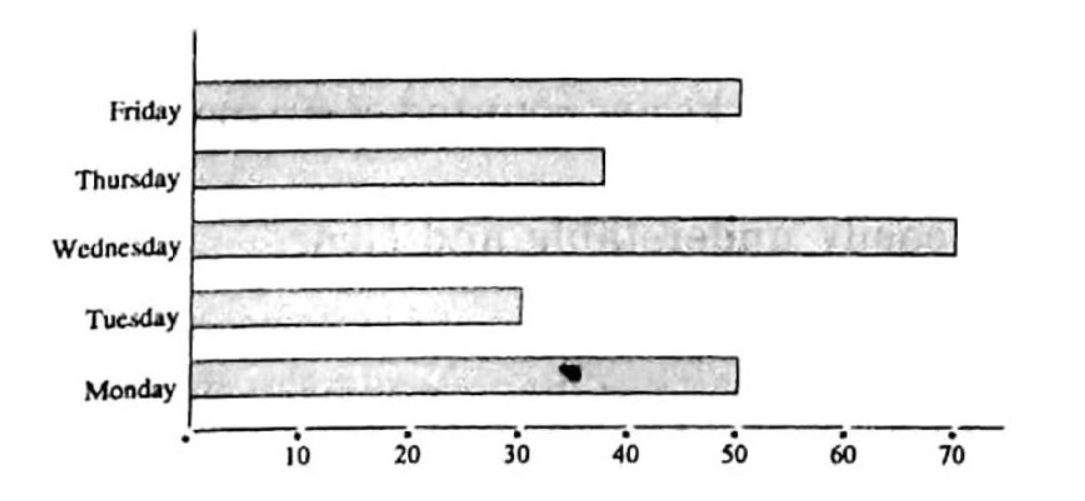
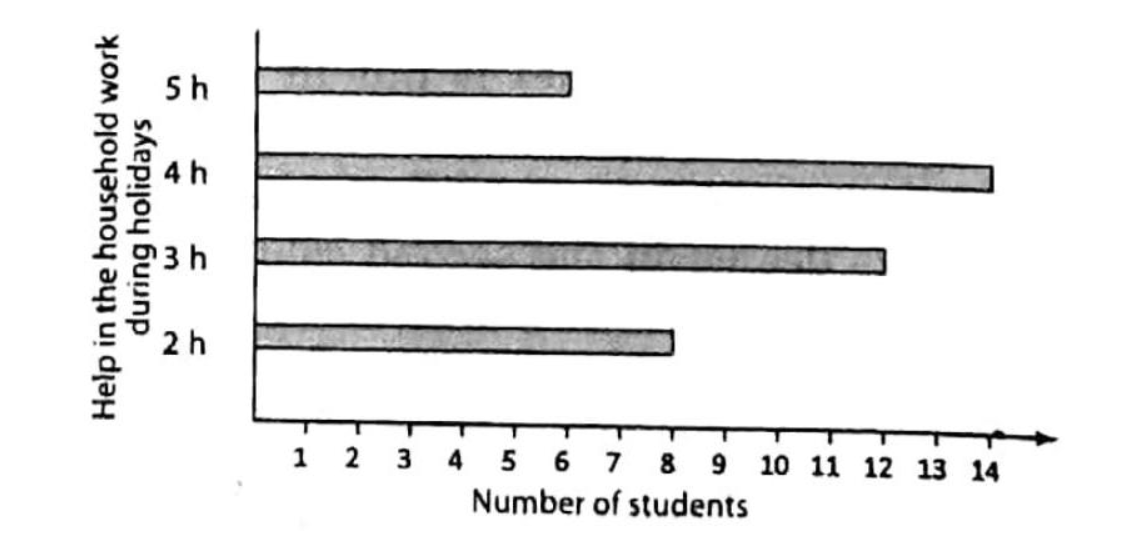
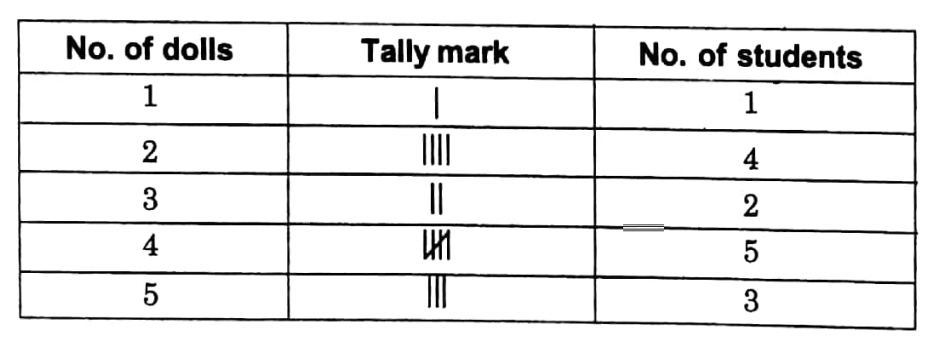

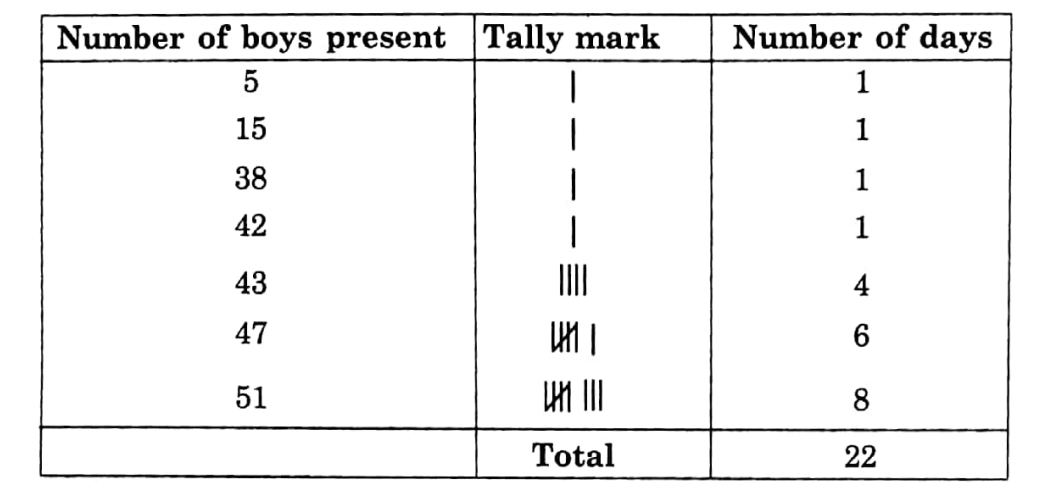

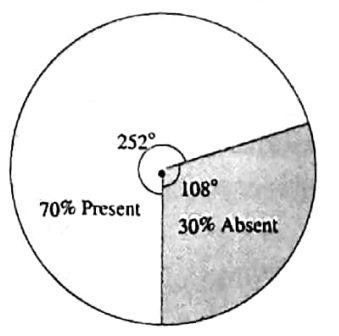

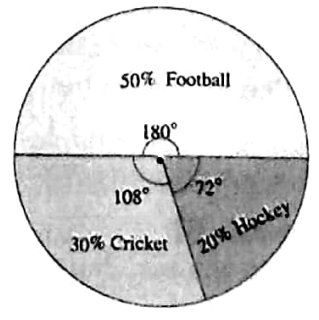
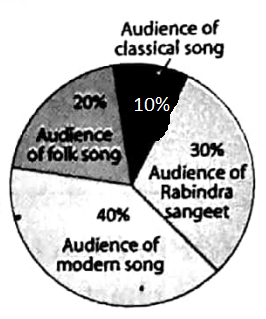
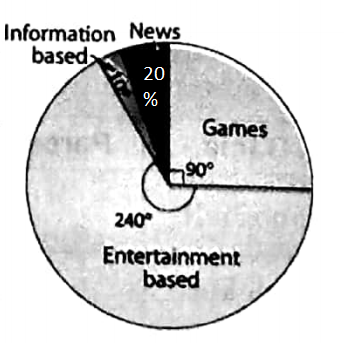

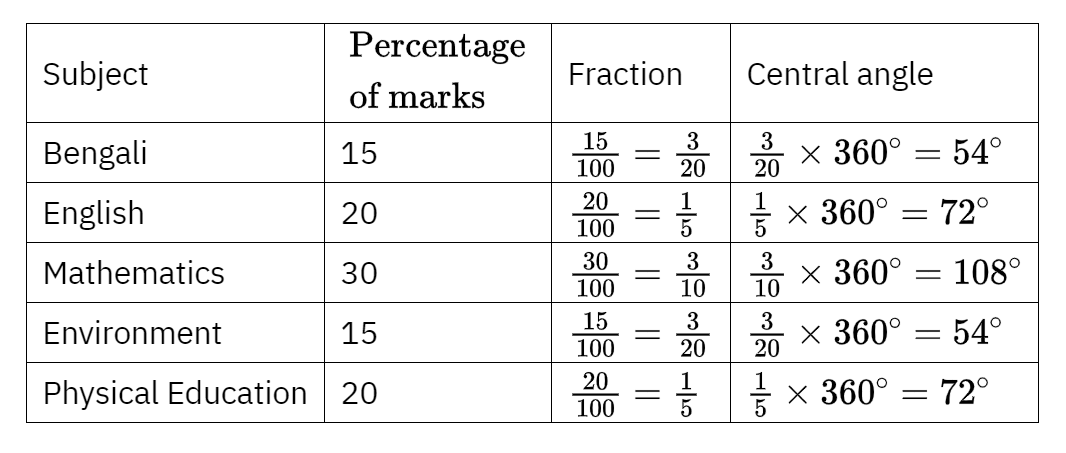
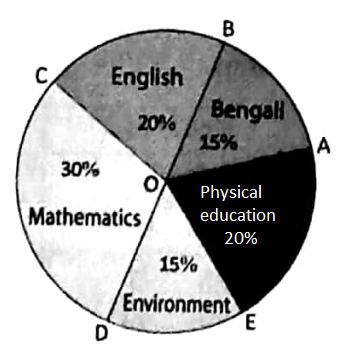

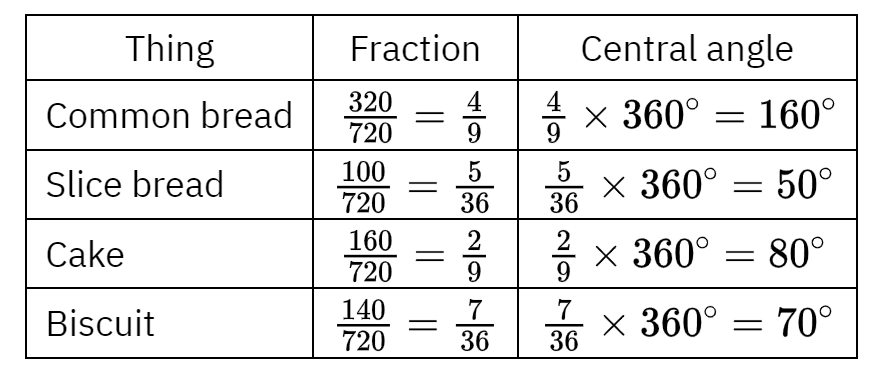
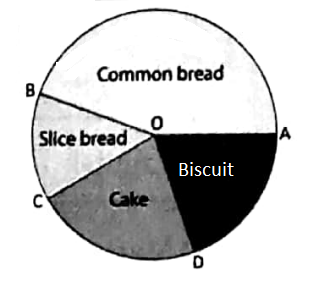

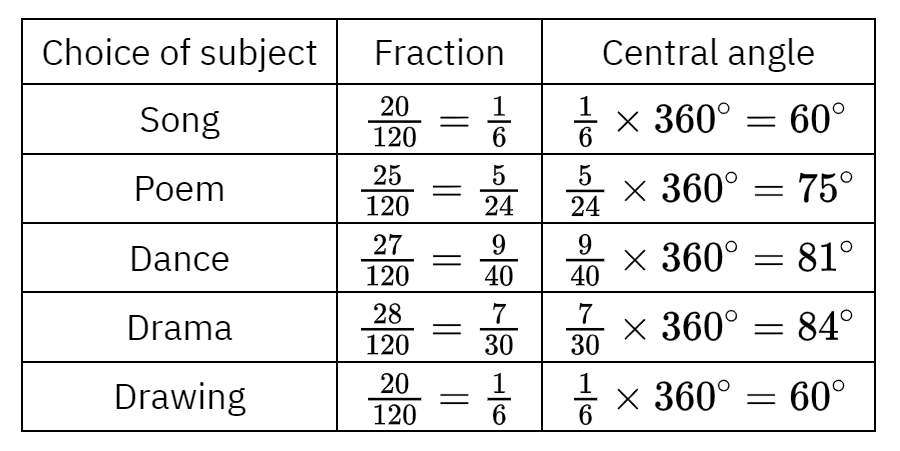
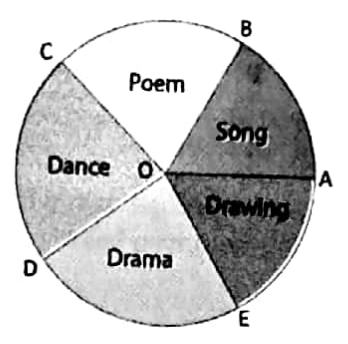
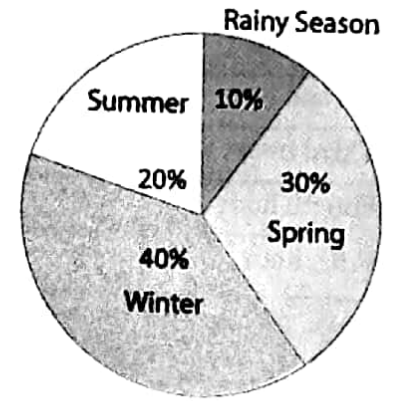
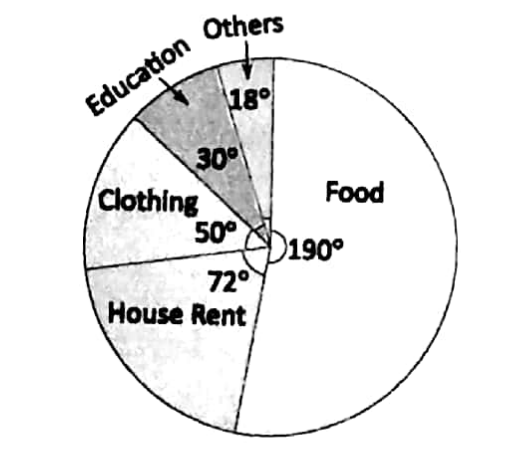
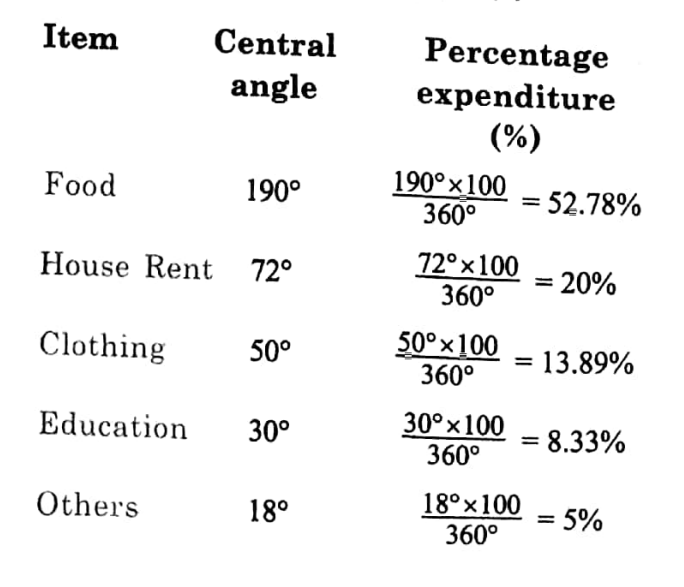
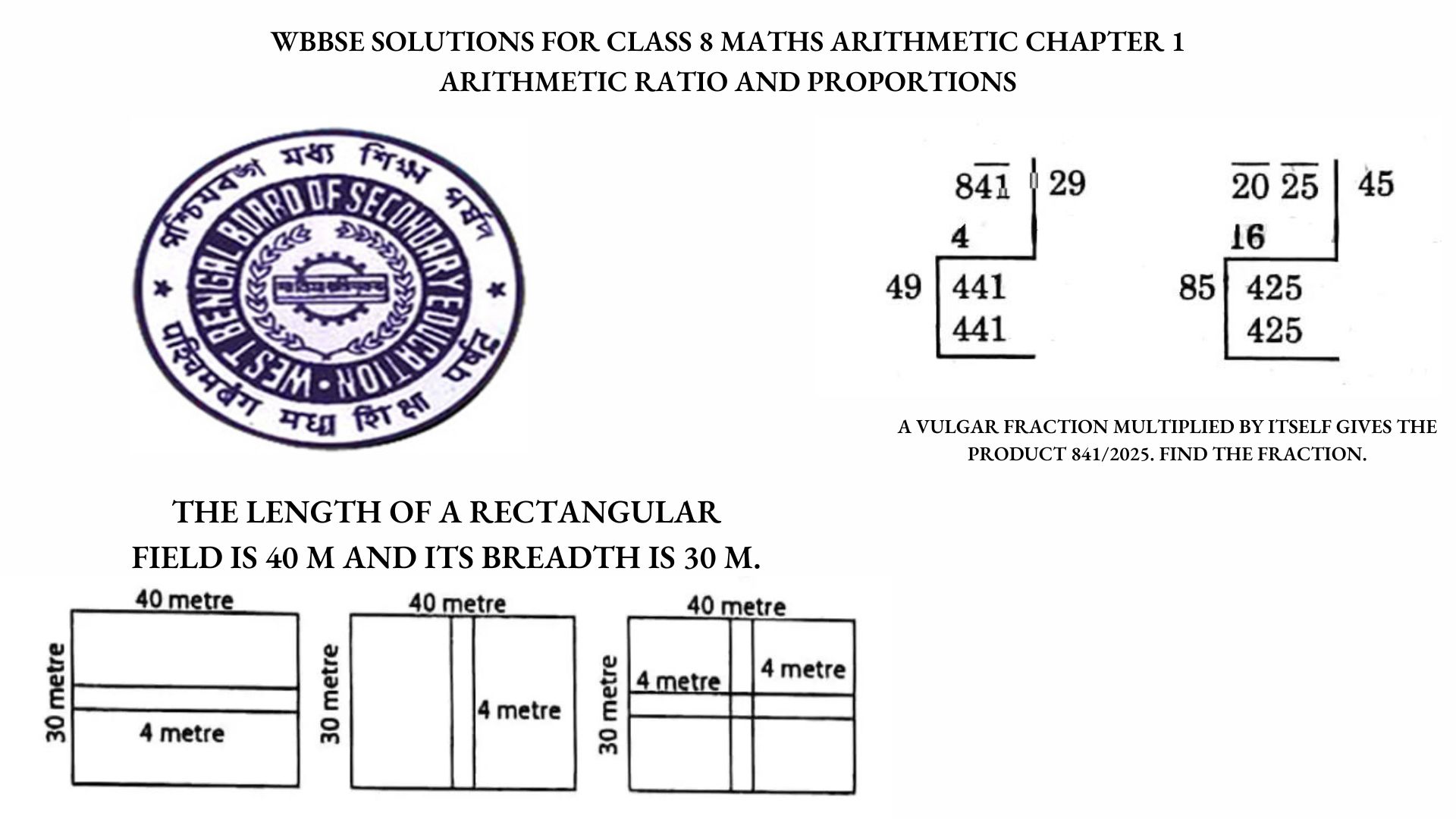 Example 2
Example 2